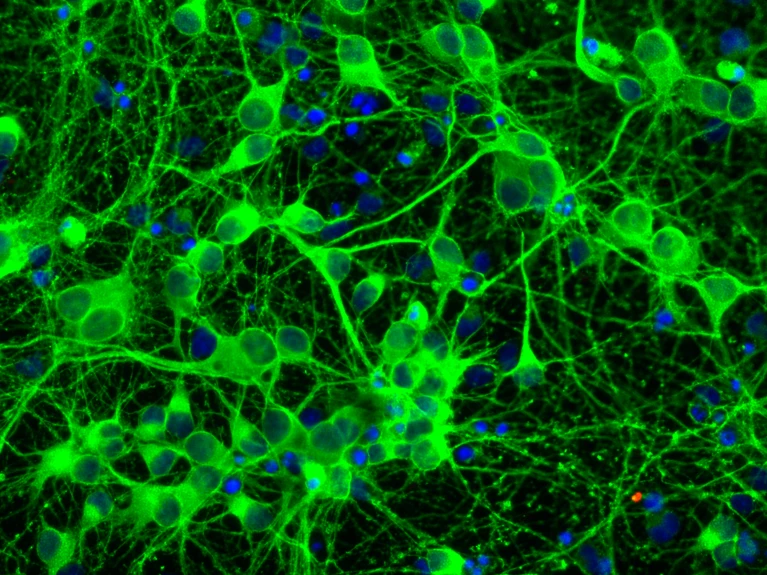Bird flu is rampant in animals. Humans ignore it at our own peril
禽流感在動物中肆虐。人類若忽視它,後果自負
Health
Since it was first discovered in birds in 1996, H5N1 has shown itself to be a Swiss Army Knife of a virus, evolving the necessary tools to break into the cells of a growing list of species. So far, it has infected and killed millions of wild and farmed birds. It’s also been found in at least 26 different kinds of mammals, including, most recently in the United States — cows, cats and house mice. The voraciousness of the virus prompted Dr. Jeremy Farrar, chief scientist of the World Health Organization in April to call it “a global zoonotic animal pandemic.” Along the way, people have been a kind of collateral damage. Humans can be infected, but we aren’t really the intended targets. That could all change quickly, however. Though H5N1 is known to have infected nearly 900 people in the past 30 years, these infections have been sporadic and usually self-limiting. The virus can still be deadly, however: More than 50% of people who are known to have been infected with H5N1 have died. Still, the virus isn’t particularly good at infecting humans. Even when virus manages to get into a person and cause symptoms, it rarely gets passed to someone else. “We call these dead-end infections,” said Dr. Scott Weese, a veterinarian and expert in zoonotic infections, at the University of Guelph in Canada. The way a dead-end infection happens, Weese explains, is that a person is around a large amount of the virus, or their immune system is too weak to resist, and H5N1 gets in. But it is not a virus that’s well-adapted to humans, so it never really builds up in respiratory secretions — the fluid that coats the nose, throat, and lungs — which would give it a way out through coughs, sneezes or even exhaled breath. There have been at least three of these have apparently dead-end infections in dairy workers in the US, who worked closely with infected milk cows. Two of the workers developed conjunctivitis, or eye infections. In one case, the worker reported getting splashed with raw milk in their eyes. A third developed respiratory symptoms after close contact with cows. All were successfully treated with an antiviral medication. None developed severe symptoms or infected others.
---from CNN
自從 1996 年在鳥類中首次發現以來,H5N1 病毒已證明自己是病毒的瑞士軍刀,不斷進化出必要的工具來侵入越來越多的物種的細胞。到目前為止,它已感染並殺死了數百萬隻野生和養殖鳥類。在至少 26 種不同的哺乳動物中也發現了這種物質,其中包括最近在美國發現的牛、貓和家鼠。 這種病毒的貪婪性促使世界衛生組織首席科學家Jeremy Farrar博士在四月稱之為「全球人畜共患動物大流行」。 一路走來,人們一直受到一種附帶傷害。人類可能會被感染,但我們並不是真正的目標目標。 然而,這一切可能很快就會改變。 儘管已知 H5N1 在過去 30 年中已感染近 900 人,但這些感染都是零星的,而且通常具有自限性。然而,該病毒仍具有致命性:已知感染 H5N1 病毒的人已死亡 50% 以上。 儘管如此,這種病毒並不特別擅長感染人類。即使病毒設法進入人體並引起症狀,也很少會傳染給其他人。 「我們稱這些為死胡同感染,」加拿大圭爾夫大學獸醫兼人畜共通感染專家Scott Weese博士說。 Weese 解釋說,死胡同感染的發生方式是,一個人周圍有大量病毒,或者他們的免疫系統太弱而無法抵抗,H5N1 就會進入。說,因此它永遠不會真正積聚在呼吸道分泌物(覆蓋鼻子、喉嚨和肺部的液體)中,而呼吸道分泌物會透過咳嗽、打噴嚏甚至呼氣來排出病毒。 在美國,與受感染乳牛密切合作的乳牛工人中,至少有三起明顯的死亡病例感染。其中兩名工人出現結膜炎或眼部感染。在一個案例中,該工人報告說生牛奶濺到了眼睛。第三個人在與乳牛密切接觸後出現呼吸道症狀。所有患者均已成功接受抗病毒藥物治療。沒有人出現嚴重症狀或感染他人。
---摘錄翻譯自CNN
FDA, Justice Department crack down on sale of illegal e-cigarettes by forming new task force
FDA和司法部成立新工作小組打擊非法電子煙銷售
Health
Federal health officials are partnering with the US Department of Justice to fight the illegal sale and distribution of e-cigarettes. The US Food and Drug Administration and Justice Department announced Monday that they are creating a task force to target the issue. The task force will include people from the US Marshals Service, US Postal Inspection Service, the Federal Trade Commission and other agencies to identify and target illegal sales and distribution of e-cigarettes. “Unauthorized e-cigarettes and vaping products continue to jeopardize the health of Americans – particularly children and adolescents – across the country,” Benjamin Mizer, the acting associate attorney general with the Justice Department, said in a news release Monday. “This interagency Task Force is dedicated to protecting Americans by combatting the unlawful sale and distribution of these products,” Mizer said. “And the establishment of this Task Force makes clear that vigorous enforcement of the tobacco laws is a government-wide priority.”
---from CNN
聯邦衛生官員正在與美國司法部合作打擊電子煙的非法銷售和分銷。 美國食品藥物管理局和司法部週一宣布,他們正在成立一個特別工作小組來解決這個問題。該工作小組將包括來自美國法警局、美國郵政檢查局、聯邦貿易委員會和其他機構的人員,以識別和打擊電子煙的非法銷售和分銷。 「未經授權的電子煙和電子煙產品繼續危害全國各地美國人的健康,特別是兒童和青少年的健康,」司法部代理副總檢察長本傑明·米澤爾在周一的新聞稿中表示。 Mizer說:“這個跨部門工作小組致力於通過打擊這些產品的非法銷售和分銷來保護美國人。” “該工作小組的成立明確表明,大力執行煙草法是整個政府的首要任務。”
---摘錄翻譯自CNN
Instant ramen ‘fire noodles’ are too spicy for this country
泡麵「火麵」對這個國家來說太辣了
Culture
Three varieties of “fire chicken” instant ramen noodles popularized by a viral internet challenge have been recalled in Denmark after they were deemed to be too spicy. The level of capsaicin found in Buldak Hot Chicken Ramen 3x Spicy, Buldak Hot Chicken Ramen 2x Spicy and Hot Chicken Stew was so high that it could poison consumers, the Danish Veterinary and Food Administration said in a statement issued Tuesday. Capsaicin is a spicy, naturally occurring chemical found in chili peppers. South Korean noodle giant Samyang, which developed the ramen, said on Wednesday that the products were not being recalled because of quality issues. It’s “because it is so spicy that it could cause problems,” a spokesperson told CNN. “This is the first time they’ve been subject to (a) recall for this reason.” The Danish regulator didn’t say whether the recall was prompted by a specific incident. It urged consumers to discard the products or return them to where they were purchased.
----from CNN
因網路挑戰而流行的三種「火雞」泡麵因被認為太辣而在丹麥被召回。 丹麥獸醫和食品管理局在周二發布的聲明中表示,Buldak Hot Chicken Ramen 3x Spicy、Buldak Hot Chicken Ramen 2x Spicy 和 Hot Chicken Stew 中的辣椒素含量過高,可能會導致消費者中毒。 辣椒素是一種存在於辣椒中的天然辛辣化學物質。 開發這種拉麵的韓國麵條巨頭三養週三表示,這些產品並未因品質問題而被召回。 一位發言人告訴美國有線電視新聞網,「因為它太辣了,可能會引起問題」。 “這是他們第一次因為這個原因被召回。” 丹麥監管機構並未透露此次召回是否是由特定事件引發的。它敦促消費者丟棄這些產品或將其退回購買地點。
---摘錄翻譯自CNN
Who were the victims of Maya sacrifice? Ancient DNA reveals an unexpected finding
瑪雅祭祀的受害者是誰?古DNA揭示了一個意想不到的發現
Culture
The ancient Maya city of Chichén Itzá in Mexico’s Yucatán Peninsula has long been associated with human sacrifice, with hundreds of bones unearthed from temples, a sacred sinkhole and other underground caverns. A long-held misconception is that the victims were often young and female — an impression that has stuck in the contemporary imagination and become hard to dislodge even as more recent research has suggested that both men and women were among those sacrificed as well as children. A study published Wednesday in the journal Nature adds unexpected detail to that more complex picture. The new analysis, based on ancient DNA from the remains of 64 people who archaeologists believe had been ritually sacrificed and then deposited in an underground chamber, found the victims were all young boys, many of whom were closely related. “There were two big moments of surprise here,” said lead study author Rodrigo Barquera, a researcher in the department of archaeogenetics at the Max Planck Institute for Evolutionary Anthropology in Leipzig, Germany. “We were thinking, influenced by traditional archaeology that we would find, a non-sex-biased burial or mostly girls,” he said.
---from CNN
墨西哥尤卡坦半島的瑪雅古城Chichén Itzá長期以來一直與活人祭祀聯繫在一起,寺廟、神聖的天坑和其他地下洞穴中出土了數百塊骨頭。 一個長期存在的誤解是,受害者往往是年輕人和女性——這種印像一直根植於當代的想像中,並且很難消除,儘管最近的研究表明,犧牲者中既有男性、女性,也有兒童。週三發表在《自然》雜誌上的一項研究為這一更複雜的圖像增添了意想不到的細節。 這項新的分析是基於64 具遺骸的古代DNA,考古學家認為這些遺骸是在儀式上被犧牲,然後存放在地下密室中的,結果發現受害者都是小男孩,其中許多人有密切的親屬關係。 「這裡有兩個重大的驚奇時刻,」該研究的主要作者、德國萊比錫馬克斯·普朗克進化人類學研究所考古遺傳學系研究員Rodrigo Barquera說。 「我們認為,受到傳統考古學的影響,我們會發現,墓葬不分性別,或者主要是女孩,」他說。
---摘錄翻譯自CNN
Sleep deprivation disrupts memory: here’s why
睡眠不足會擾亂記憶:原因如下
Sciences
A crucial brain signal linked to long-term memory falters in rats when they are deprived of sleep — which might help to explain why poor sleep disrupts memory formation. Even a night of normal slumber after a poor night’s sleep isn’t enough to fix the brain signal. These results, published today in Nature, suggest that there is a “critical window for memory processing”, says Loren Frank, a neuroscientist at the University of California, San Francisco, who was not involved with the study. “Once you’ve lost it, you’ve lost it.” In time, these findings could lead to targeted treatments to improve memory, says study co-author Kamran Diba, a computational neuroscientist at the University of Michigan Medical School in Ann Arbor. Neurons in the brain seldom act alone; they are highly interconnected and often fire together in a rhythmic or repetitive pattern. One such pattern is the sharp-wave ripple, in which a large group of neurons fire with extreme synchrony, then a second large group of neurons does the same and so on, one after the other at a particular tempo. These ripples occur in a brain area called the hippocampus, which is key to memory formation. The patterns are thought to facilitate communication with the neocortex, where long-term memories are later stored. One clue to their function is that some of these ripples are accelerated re-runs of brain-activity patterns that occurred during past events. For example, when an animal visits a particular spot in its cage, a specific group of neurons in the hippocampus fires in unison, creating a neural representation of that location. Later, these same neurons might participate in sharp-wave ripples — as if they were rapidly replaying snippets of that experience. Previous research found that, when these ripples were disturbed, mice struggled on a memory test. And when the ripples were prolonged, their performance on the same test improved, leading György Buzsáki, a systems neuroscientist at NYU Langone Health in New York City, who has been researching these bursts since the 1980s, to call the ripples a ‘cognitive biomarker’ for memory and learning. Researchers also noticed that sharp-wave ripples tend to occur during deep sleep as well as during waking hours, and that those bursts during slumber seem to be particularly important for transforming short-term knowledge into long-term memories. These links between the ripples, sleep and memory are well-documented, but there have been few studies that have directly manipulated sleep to determine how it affects these ripples, and in turn memory, Diba says.
---from CNN
當老鼠睡眠不足時,與長期記憶相關的一個重要的大腦訊號就會減弱——這可能有助於解釋為什麼睡眠不足會破壞記憶形成。即使是一夜睡眠不佳後的一夜正常睡眠也不足以修復大腦訊號。 未參與這項研究的加州大學舊金山分校神經科學家Loren Frank 表示,今天發表在《自然》雜誌上的這些結果表明,存在「記憶處理的關鍵窗口」。 “一旦你失去了它,你就失去了它。” 研究合著者、安娜堡密西根大學醫學院的計算神經科學家 Kamran Diba 表示,隨著時間的推移,這些發現可能會導致有針對性的治療來改善記憶力。 大腦中的神經元很少單獨行動;它們高度相互關聯,並且經常以有節奏或重複的模式一起觸發。其中一種模式是尖波波紋,其中一大群神經元以極端同步的方式放電,然後第二大群神經元也以特定的節奏依次進行同樣的操作,依此類推。這些漣漪發生在稱為海馬體的大腦區域,這是記憶形成的關鍵。這些模式被認為促進了與新皮質的溝通,新皮質後來被儲存在長期記憶中。 其功能的一個線索是,其中一些漣漪是過去事件期間發生的大腦活動模式的加速重新運行。例如,當動物造訪籠子中的特定地點時,海馬體中的一組特定神經元會一致放電,從而創建該位置的神經表徵。後來,這些相同的神經元可能會參與尖波漣漪——就好像它們正在快速重播該經歷的片段一樣。 先前的研究發現,當這些漣漪受到干擾時,老鼠在記憶測試中會遇到困難。當漣漪延長時,他們在同一測試中的表現會有所改善,紐約市紐約大學蘭格尼健康中心的系統神經科學家György Buzsáki 自20 世紀80 年代以來一直在研究這些爆發,他將漣漪稱為「認知生物標記」用於記憶和學習。 研究人員也注意到,銳波漣漪往往發生在深度睡眠期間和清醒時間,而睡眠期間的這些爆發似乎對於將短期知識轉化為長期記憶特別重要。Diba說,這些漣漪、睡眠和記憶之間的關聯有據可查,但很少有研究直接操縱睡眠來確定它如何影響這些漣漪,進而影響記憶。
---摘錄翻譯自CNN
How personalized cancer vaccines could keep tumours from coming back
個人化癌症疫苗如何防止腫瘤復發
Sciences
Angela Evatt lay face down under anaesthesia as surgeons removed a malignant mole from her back and a lymph node from her left armpit. The purpose of the operation was not only to excise the cancerous tissue from her body, but also to begin the process of crafting a personalized vaccine that would train Evatt’s immune system to attack any tumour cells left behind. The vaccine uses messenger RNA (mRNA), carefully constructed to encode the unique mutant proteins, known as neoantigens, that are found on the surface of Evatt’s melanoma skin cancer cells. She first received this bespoke vaccine, alongside a potent immune-stimulating drug known as a checkpoint inhibitor, as part of a clinical trial in March 2020, just months before mRNA vaccines would become household names in the fight against COVID-19. A larger-scale study is still needed to confirm these promising results and to support bringing the vaccine to market. A trial involving more than 1,000 people with melanoma kicked off last July; another for nearly 900 people who have a type of lung cancer began a few months later. But even as the cancer research community awaits further evidence, the early results have injected fresh enthusiasm into the cancer vaccine field. “It has had a big impact across all vaccine development,” says tumour immunologist Nora Disis, director of the Cancer Vaccine Institute at the University of Washington in Seattle. After decades of vaccine trial setbacks, she says, “we’ve started to see the pendulum swing”.
--from Nature
Angela Evatt 在麻醉下面朝下躺著,外科醫生從她的背部切除了一顆惡性痣,並從她的左腋窩切除了一個淋巴結。手術的目的不僅是從她體內切除癌組織,而且是開始製作個人化疫苗的過程,該疫苗將訓練Evatt的免疫系統攻擊任何留下的腫瘤細胞。 該疫苗使用精心建構的信使 RNA (mRNA) 來編碼獨特的突變蛋白,即新抗原,這種蛋白存在於 Evatt 的黑色素瘤皮膚癌細胞表面。作為2020 年3 月臨床試驗的一部分,她首次接受了這種定制疫苗以及一種被稱為檢查點抑製劑的強效免疫刺激藥物,就在mRNA 疫苗在對抗COVID-19 的鬥爭中家喻戶曉的幾個月前。 仍需要進行更大規模的研究來證實這些有希望的結果並支持將疫苗推向市場。一項涉及 1,000 多名黑色素瘤患者的試驗於去年 7 月開始;幾個月後,又開始了另一項針對近 900 名肺癌患者的治療。 但即使癌症研究界正在等待進一步的證據,早期的結果也為癌症疫苗領域注入了新的熱情。 「它對所有疫苗的開發產生了巨大影響,」西雅圖華盛頓大學癌症疫苗研究所所長、腫瘤免疫學家Nora Disis 說。她說,經過幾十年的疫苗試驗挫折,「我們已經開始看到鐘擺的擺動」。
--摘錄翻譯自Nature
